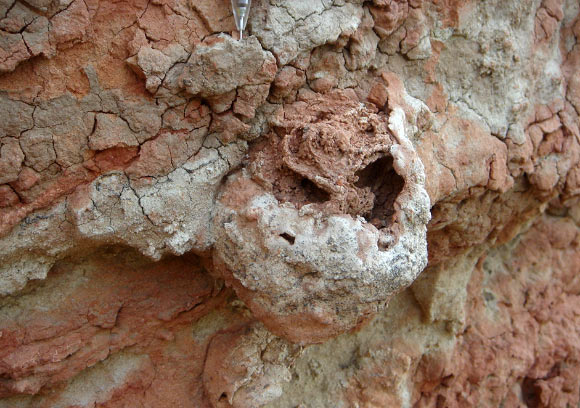An international team of paleontologists has discovered the oldest known examples of ‘fungus gardens’ within 25 million-year-old fossilized termite nests from southwestern Tanzania.
Termites are among the most diverse and ecologically important groups of insects in modern ecosystems, playing a critical role as natural decomposers of plant tissues.
Members of the termite subfamily Macrotermitinae cultivate fungi of the genus Termitomyces in so-called gardens in underground nests or chambers, helping to convert plant material into a more easily digestible termite food source.
Scientists had previously used DNA from modern termites to estimate the origin of fungus farming behavior back to at least 25 to 30 million years ago (Oligocene epoch), when domestication of the ancestor of Termitomyces by the ancestor of the Macrotermitinae occurred.
The fossil evidence from Tanzania’s Great Rift Valley confirmed that date, allowing paleontologists to more accurately characterize the timing and evolution of the symbiotic relationship between termites and fungi. The relationship likely significantly modified the environment and landscape.
“The origin of this behavior likely had a profound effect on how nutrients were concentrated across the landscape, influencing the evolution of Africa’s biota,” said co-author Dr. Nancy Stevens, from Ohio University.
“The transition to agriculture dramatically increased the range of possible habitats for both the fungus-growing termites and their domesticated fungi, very much like humans and their domesticated crops and livestock, tens of millions of years later,” added co-author Dr. Duur Aanen, from Wageningen University in the Netherlands.
While the cradle of termite agriculture presumably was in an African rainforest, the transition to fungiculture helped the termites to disperse to less favorable dry savannas and also out-of-Africa migrations into Asia.
“The phenomenon might have been triggered by the initial development of the Great Rift Valley in this part of eastern Africa, and the dramatic transformation of the landscape around this time,” said lead author Dr. Eric Roberts, from James Cook University in Townsville, Queensland, Australia.
Source: Sci-News

































Leave a Comment
You must be logged in to post a comment.